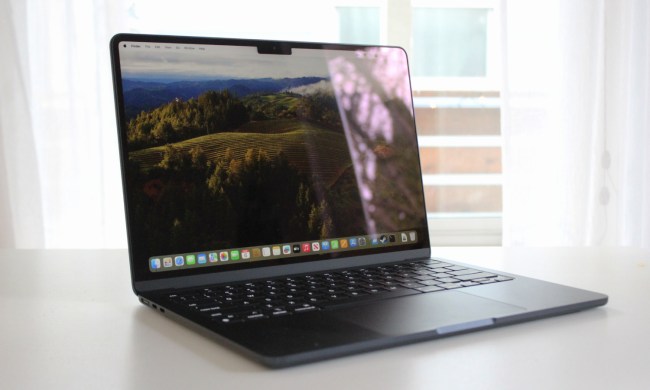Your next iPhone or Mac could have a major advantage over rival devices, with performance and efficiency that nothing else can match, if a new report is to be believed. It claims Apple has gobbled up the entire supply of a new breed of superefficient chips.
Those chips are manufactured by a company called TSMC that has made Apple’s powerful mobile and computer chips for years. If correct, the report from DigiTimes (via MacRumors) implies Apple’s competitors — whether they’re making Windows PCs or Android smartphones — will have to wait their turn while Apple has its fun with the brand-new 3-nanometer chips.

The benefits for Apple could be huge. The A16 chip inside the iPhone 14 Pro is made with a 4nm process, while the latest Mac chips use a 5nm process. Shifting down to a 3nm process means fitting more transistors onto the chip, which could bring generational improvements in both performance and efficiency.
For instance, the 3nm chips are expected to bring a 35% step up in power efficiency compared to Apple’s 4nm iPhone chips. That means they’ll require less power to produce more performance, which is good news for both battery life and heat management. The iPhone’s A-series chips already lead the industry in terms of both performance and efficiency, and a 35% jump could extend Apple’s advantage considerably.
The changes for the Mac, meanwhile, could be even more significant considering Apple’s M2 chips are made using a 5nm process. When it first launched, we were disappointed that the M2 was not a generational leap in terms of output compared to the M1, which was also a 5nm chip. That could all change when we see the M3 series make its debut, as it will likely incorporate the missing 3nm process that held back the M2.
As well as the M3, we can expect Apple’s pro-level chips, including the M3 Pro, M3 Max and M3 Ultra, to be built on the same 3nm process. That could help them offer incredible performance without requiring an extensive cooling system — a hallmark of Apple’s own chips — and give a major boost to future MacBook Pros (although the next Mac Pro might arrive too early for the M3 series).
DigiTimes has already said that TSMC’s 3nm process is yielding even better results than expected. That, combined with Apple snapping up the entire supply of TSMC’s 3nm chips, should help the next iPhone and Mac chips destroy anything made by rival companies. If you’re waiting to buy a new iPhone or Mac, you could be in for a treat.



